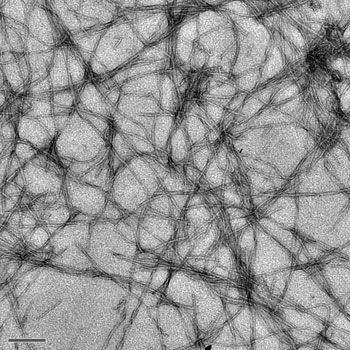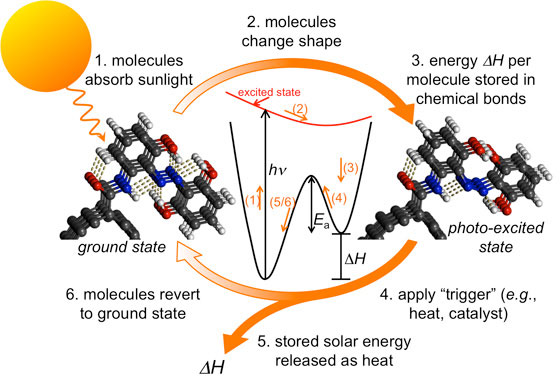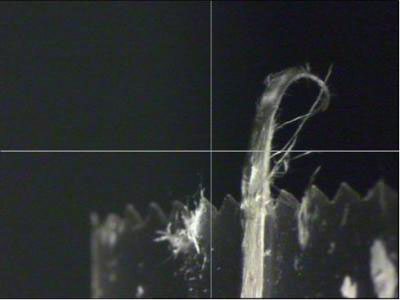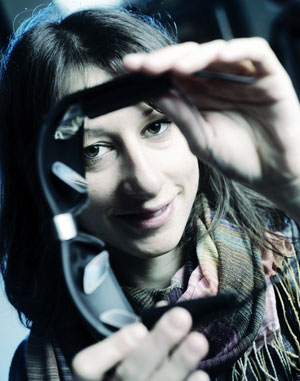Molecules 'light up' Alzheimer's roots (w/video)
 Rice University lab's light-switching complex attaches itself to amyloid proteins.
Rice University lab's light-switching complex attaches itself to amyloid proteins.
Jul 13th, 2011
Read more
 Rice University lab's light-switching complex attaches itself to amyloid proteins.
Rice University lab's light-switching complex attaches itself to amyloid proteins.
Jul 13th, 2011
Read more University of Central Florida's Thomas O'Neal will be testifying Thursday, July 14, about the revolutionary nature of nanotechnology before the U.S. Senate Subcommittee on Science and Space.
University of Central Florida's Thomas O'Neal will be testifying Thursday, July 14, about the revolutionary nature of nanotechnology before the U.S. Senate Subcommittee on Science and Space.
Jul 13th, 2011
Read moreEU-funded scientists have developed risk assessment criteria for engineered nanomaterials (ENMs) that will help support experts in making innovation and policy decisions. An outcome of the NANOHOUSE project, which is backed with EUR 2.4 million under the 'Nanosciences, nanotechnologies, materials and new production technologies' (NMP) Theme of the EU's Seventh Framework Programme, findings reveal that product design can affect the unintentional release of ENMs.
Jul 13th, 2011
Read moreCarbonhagen 2011 is a two day symposium on graphene and carbon nanotubes, jointly organised by the Technical University of Denmark, the University of Copenhagen and Nano Connect Scandinavia. The symposium will cover fabrication, physical, electronic, chemical and optical properties, device integration and applications.
Jul 13th, 2011
Read moreHitachi High Technologies and Canada's National Institute for Nanotechnology (NINT) today opened the Hitachi Electron Microscopy Products Centre (HEMiC) and unveiled a Hitachi H-95000 environmental transmission electron microscope (E-TEM) that is the first of its kind outside of Japan.
Jul 13th, 2011
Read more Numerous industrial processes make use of blends. Researchers from the Institute of Physical Chemistry of the Polish Academy of Sciences have studied how the external electric field affects the rate of component separation in blends composed of polymers and liquid crystals and those composed of various types of polymers.
Numerous industrial processes make use of blends. Researchers from the Institute of Physical Chemistry of the Polish Academy of Sciences have studied how the external electric field affects the rate of component separation in blends composed of polymers and liquid crystals and those composed of various types of polymers.
Jul 13th, 2011
Read moreThe University of Warwick Department of Physics has been awarded a prestigious five-year grant to the sum of GBP 1.7 million for "Creating Silicon Based Platforms for New Technologies".
Jul 13th, 2011
Read more Modified carbon nanotubes can store solar energy indefinitely, then be recharged by exposure to the sun.
Modified carbon nanotubes can store solar energy indefinitely, then be recharged by exposure to the sun.
Jul 13th, 2011
Read more Rice technique reveals interactions between nanotubes, photoluminescent materials.
Rice technique reveals interactions between nanotubes, photoluminescent materials.
Jul 12th, 2011
Read moreResearchers at the Stanford School of Engineering have delivered a nanoelectronic synapse that might drive a new class of microchips that can learn, adapt and make probability-based decisions in complex environments. Their work might one day lead to real-time brain simulators that enhance our understanding of neuroscience.
Jul 12th, 2011
Read moreA team of University of Maryland nanotechnology researchers has solved one of the most vexing challenges hindering the use of carbon nanomaterials for better electrical energy storage and for enhancing the fluorescence sensing capabilities of biosensors.
Jul 12th, 2011
Read moreUsing a special laser technique, research scientists at the Fraunhofer Institute for Laser Technology ILT and other Fraunhofer Institutes have succeeded in producing hybrid biomimetic matrices. These serve as a basis for scaffold and implant structures on which the cells can grow effectively.
Jul 12th, 2011
Read more Sepiolites characterized for first time paving way to synthesis.
Sepiolites characterized for first time paving way to synthesis.
Jul 12th, 2011
Read more A novel approach to restoring sight using a 'bionic eye' is being investigated at Swinburne University of Technology. The laser stimulation of optic nerves is the focus of this research to develop a vision prosthesis - perhaps a tiny laser device fitted in a pair of spectacles - much like the cochlear implant for restoring hearing.
A novel approach to restoring sight using a 'bionic eye' is being investigated at Swinburne University of Technology. The laser stimulation of optic nerves is the focus of this research to develop a vision prosthesis - perhaps a tiny laser device fitted in a pair of spectacles - much like the cochlear implant for restoring hearing.
Jul 12th, 2011
Read moreTel Aviv University team connects neurons to computers to decipher the enigmatic code of neuronal circuits.
Jul 12th, 2011
Read moreThe sun has enough power to supply the whole earth with electricity. But in Europe solar cells make only a vanishing small share of renewable energy sources. Solar cell production is still an expensive process. And the photovoltaic cells can only exploit about 16 percent of the energy of the sunlight.
Jul 12th, 2011
Read more